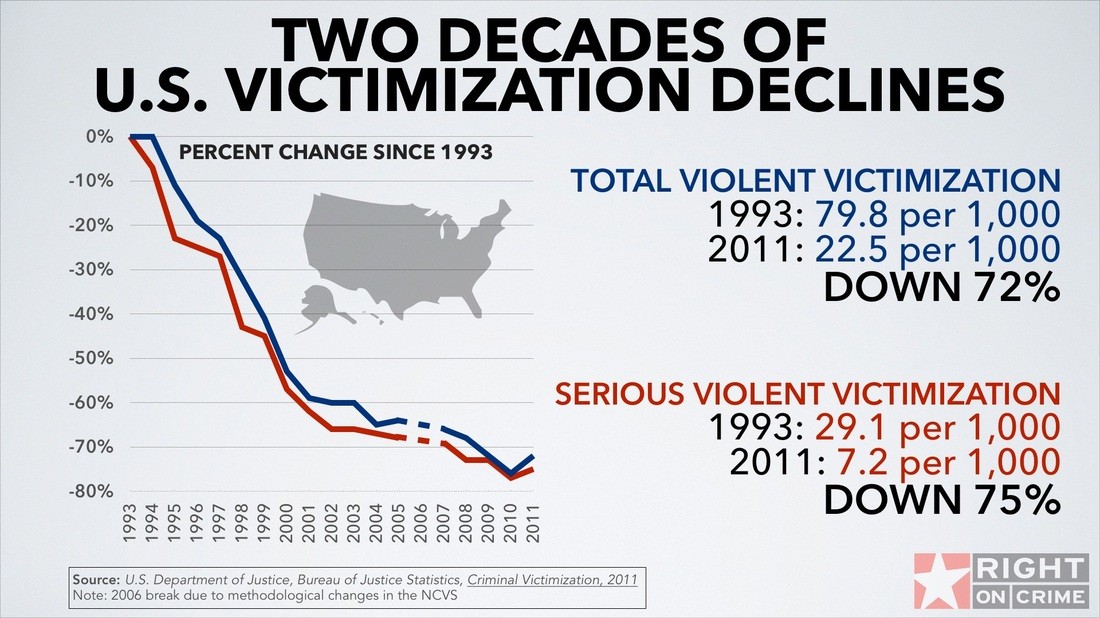
Rather than shop, I spent a rainy Black Friday at home catching up on my reading and came across an intriguing editorial in that day’s New York Times. Titled “False Alarms About a National Crime Wave,” the Times‘ editorial board provided detailed statistics indicating that, far from escalating, the trend in violent crime in America is in fact receding dramatically.
The Times article called the long-term trend “unmistakable,” adding that “the rate of violent crime, including murder, has been going down for a quarter-century, and is at its lowest in decades. On average, it is half of what it was in 1990, and in some places even lower.”
As a long-time resident of Memphis, a city that’s unfortunately known for its high crime rates, these observations piqued my interest, and sent me off into the ether to check out the FBI’s Uniform Crime Reports. It’s a simple task; they’re found at: https://www.fbi.gov/about-us/cjis/ucr/crime-in-the-u.s/. The reports date back to 1930, although the oldest one online is from 1995.
I decided to do a two-decade comparison. Despite what critics sometimes say, the FBI’s numbers do seem quite “uniform” for every metro area in the country, comparing as they do apples to apples in a dozen well-defined crime categories. So I pulled up the detailed numbers for the Memphis metro area in 1995 and compared them with the same numbers 18 years later — in 2013 — the latest full year for which FBI statistics are available.
Those numbers speak volumes about what’s actually been happening here, suggesting that there’s something of a silver lining to our local crime cloud. Here are a few of the most interesting statistics:
• The Memphis Metropolitan Statistical Area (MSA) had a population of 1,072,051 in 1995; in 2013 there were 1,347,803 of us. That’s a 26 percent increase.
• Despite the fact that we had 26 percent more people in 2013 than 1995, the total number of violent crimes committed annually remained just about the same over this 18-year period: 13,432 in 1995, 13,389 in 2013.
• The murder rate in the Memphis MSA declined by 35 percent, from 214 in 1995 to 139 in 2013. Rapes declined similarly, from 937 in 1995 to 617 in 2013.
• Property crimes dropped 24 percent, from 74,042 (1995) to 56,471 (2013), while motor-vehicle theft fell from 16,263 (1995) to 3,517 (2013), a remarkable 78-percent decline.
These numbers suggest, pretty convincingly, that Memphis today is in fact a safer place than the Memphis of the mid-1990s. More importantly, this downward trend has occurred all while our metro-area population has grown over 26 percent over the past two decades. Even in our “worst” categories, the crime stats for our now-more-populous area have stayed roughly the same, in raw-number terms.
Now let’s face it: Memphis’ crime numbers, like those of similarly poor Southern cities, are still pretty miserable, overall, when compared to more prosperous places like Boston or Seattle, cities whose murder rates, for example, are one-fourth of ours. But there seems to be no question that we are a decidedly safer place than we used to be. And while it certainly is premature to declare victory in the war against crime, we should not ignore the fact that the overall trend in regard to crime in the Mid-South is positive, not negative.
Mark Twain once said there are three kinds of lies: “Lies, damned lies, and statistics.” But sometimes statistics, however drab, represent indisputable facts. In 1995, the Memphis metro area endured 214 murders; in 2013, we had “only” 138. Of course, a single murder any year in Memphis is one murder too many. But does a 35 percent drop in your city’s murder rate indicate that the city is being engulfed by an all-new tidal wave of local crime?
I think not. As a community, we should start by remembering to allow our discussions about crime to be guided as much as possible by factual information, not by uninformed opinion that occasionally borders on hysteria. Blind hogs may get lucky occasionally, but they rarely find acorns.
Kenneth Neill is the Publisher/CEO of Contemporary Media, Inc., the parent company of The Memphis Flyer.